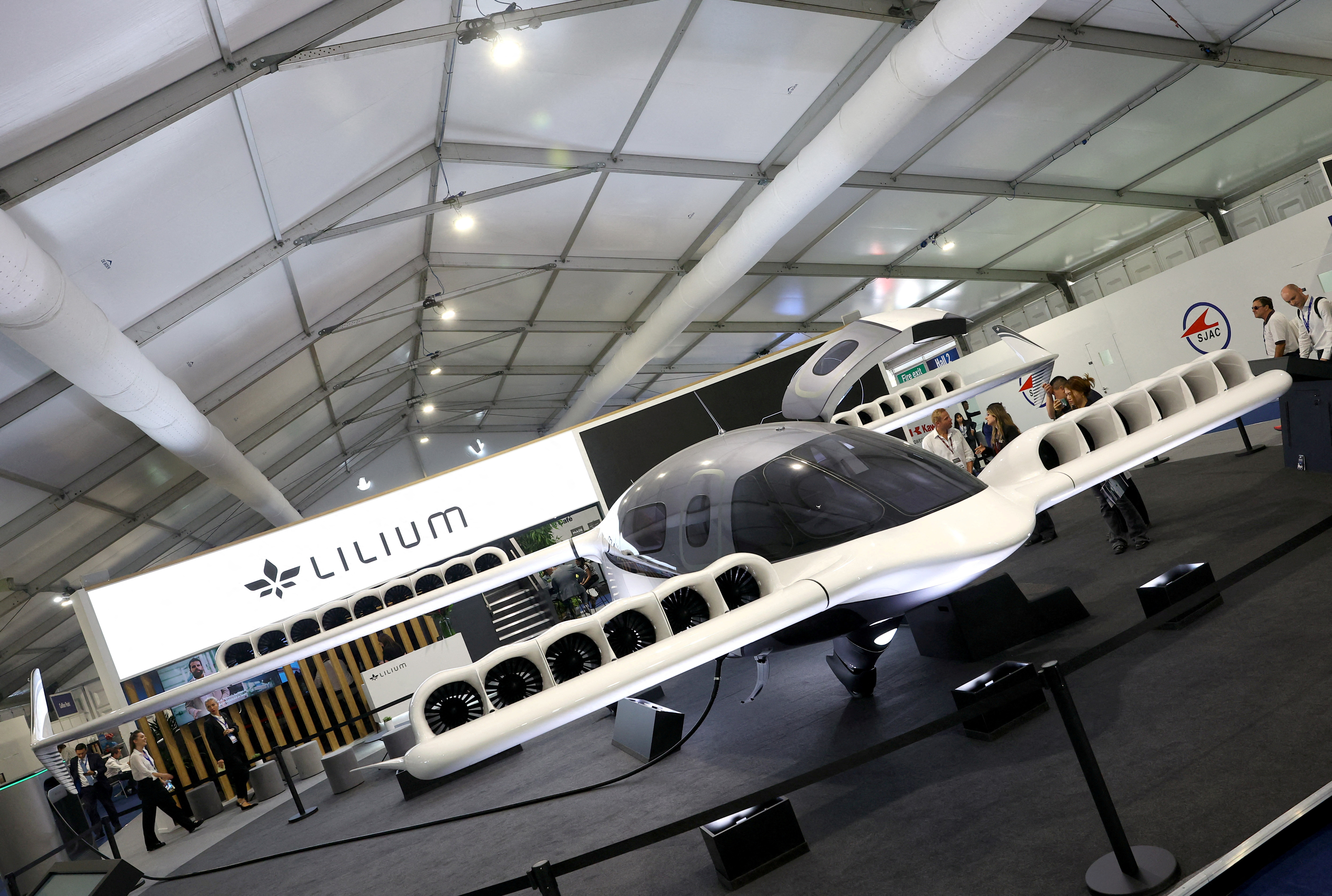Struggle for skilled workers in spotlight at Farnborough Airshow

By Tim Hepher, Allison Lampert and David Shepardson
FARNBOROUGH, England (Reuters) -Germany’s Lilium Jet has a queue of young engineers and students waiting to board thanks to the interest of a five-year-old boy.
The futuristic flying taxi is one of many high-tech projects on display as the Farnborough Airshow turns its attention to the aerospace industry’s urgent recruitment problem.
“We weren’t intending to open up the cabin today but a five-year-old boy came along and said ‘this takes off vertically and why can’t I get on board’ and since then we have had a queue of visitors,” said talent acquisition head Alex Jordan.
For the young boy, a job in aviation remains a distant dream, but the industry is hungry for skilled recruits to meet demand.
“Aerospace is always the high frontier… you see things flying and you want to work for them,” said Jeet Makadia, 27, a recent engineering graduate working on a project at Rolls-Royce.
Visitors to the exhibition which ended on Friday will not immediately solve aerospace’s problem in replacing workers lost during the pandemic. But the threat from labour shortages to current production and future growth plans casts a long shadow over the show.
“There are very few people studying aerospace so there is a people shortage” said Tushar Subhash Dhulasawant, 26, a recently graduated engineer interested in control systems and UAV design.
Aerospace’s pitch to potential recruits includes visionary ambitions like space projects that few other industries can match.
But aerospace giants like Boeing and Airbus face competition from nimble sectors like artificial intelligence that deploy many of the same engineering skills.
“You have to assume that they are going to do something different,” and not stay in one assignment indefinitely, said Paula Hartley, a senior defence executive at Lockheed Martin.
HQW Precision UK in Plymouth, England, supplies super-precision ball bearings for items like starter generators for planes, directional fins for missiles or satellites in space.
The 75-year-old company, previously known as Barden, is moving to supply not just components but pre-assembled systems that can slot into place and be sold for a higher value.
But the “secret sauce” for the highly specialist design work is availability of application engineers, a sought-after niche of engineers who convert customer needs into specific products, said Mark Wakeham, business development manager.
“For us to move into this area, which we absolutely have to do, we just need more and more engineers in the future pipeline,” he told Reuters.
STEM EDUCATION
The company is not alone. The mismatch between supply and demand for jobs is imposing a broad cost on the sector.
If aerospace were a country, it would have 4.4 % unemployment, according to McKinsey – about the level that economists deem full employment, driving up wages.
According to the same data, the aerospace industry’s talent gap could cost an average-sized aerospace company $300 million to $330 million in lost productivity every year.
Recruiters say the answer to the industry’s people problem starts in schools, but won’t deliver an immediate fix.
“It’s not only about promoting the women we have (and) hiring more women… but also about making sure that we get more women into the system at the entry level with education,” said Arjan Meijer, CEO of Brazil’s Embraer Commercial Aviation.
He and other executives acknowledged that the male-dominated industry had not yet achieved its diversity targets.
Education ministers from the Group of Seven industrialised nations last month voiced concerns about access to science, technology, engineering, and mathematics (STEM) teaching, especially for girls and marginalised groups.
“It is about showcasing it, especially to girls and young women,” Kirsten McGuire, who promotes STEM in schools with British education charity SATRO, said in an educational area at the show designed to capture the attention of young visitors.
There have also been concerns that aviation’s record on greenhouse gas emissions may deter young entrants. The industry has pledged to reduce emissions to net zero by 2050, but has faced controversy over alleged greenwashing in northern Europe.
At the Lilium stand, tomorrow’s pioneers seemed undeterred.
“I don’t think it will put me off. Nearly every (company) here is worried about emissions. So probably by the time I am able to become an engineer there will be loads of engines I can use in my designs,” said 13-year-old Vincent Liao.
Asked what problem he would most like to solve, he said: “Probably something to do with emissions, a new concept… maybe an idea nobody has thought of to save as much fuel as possible”.
(Additional reporting by Joanna Plucinska and Abhijith Ganapavaram; Editing by Emelia Sithole-Matarise)







